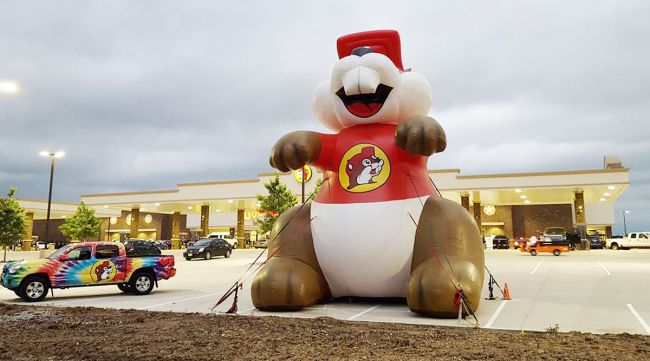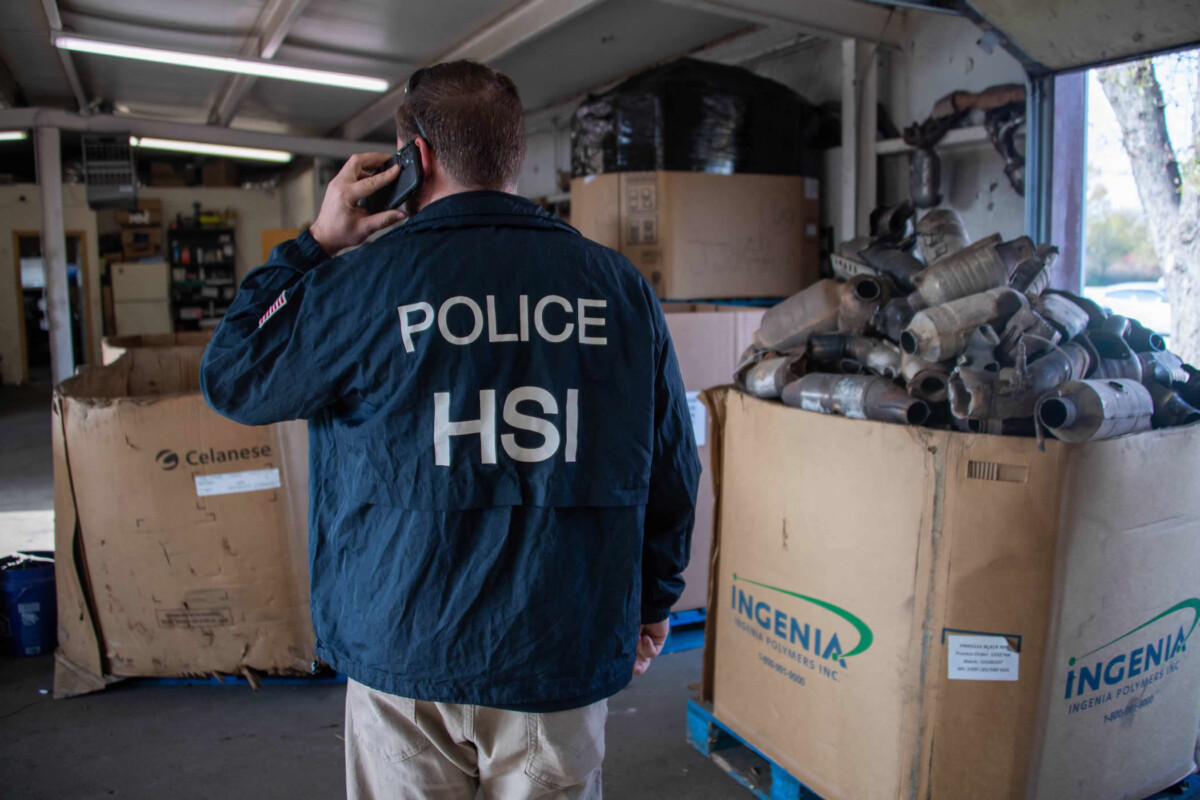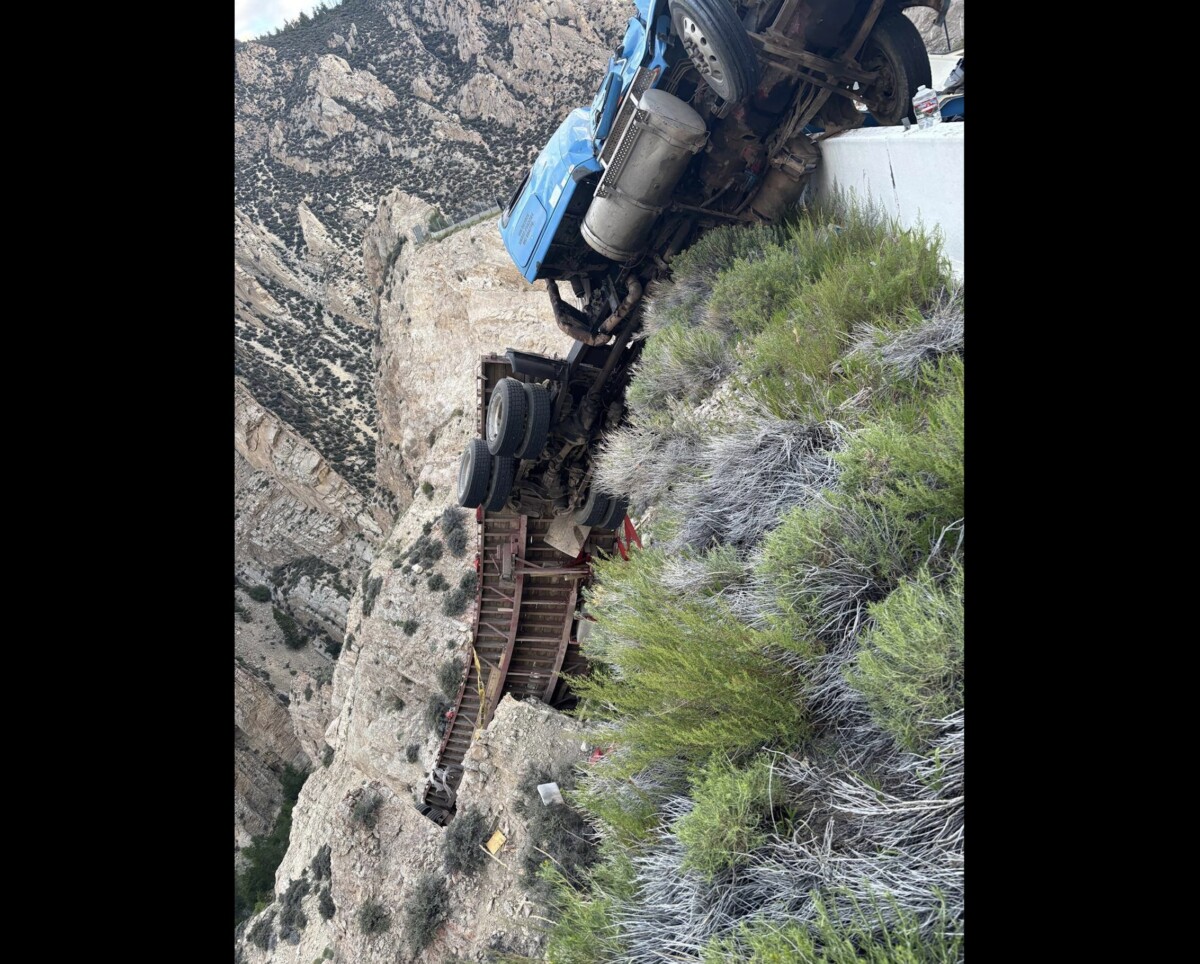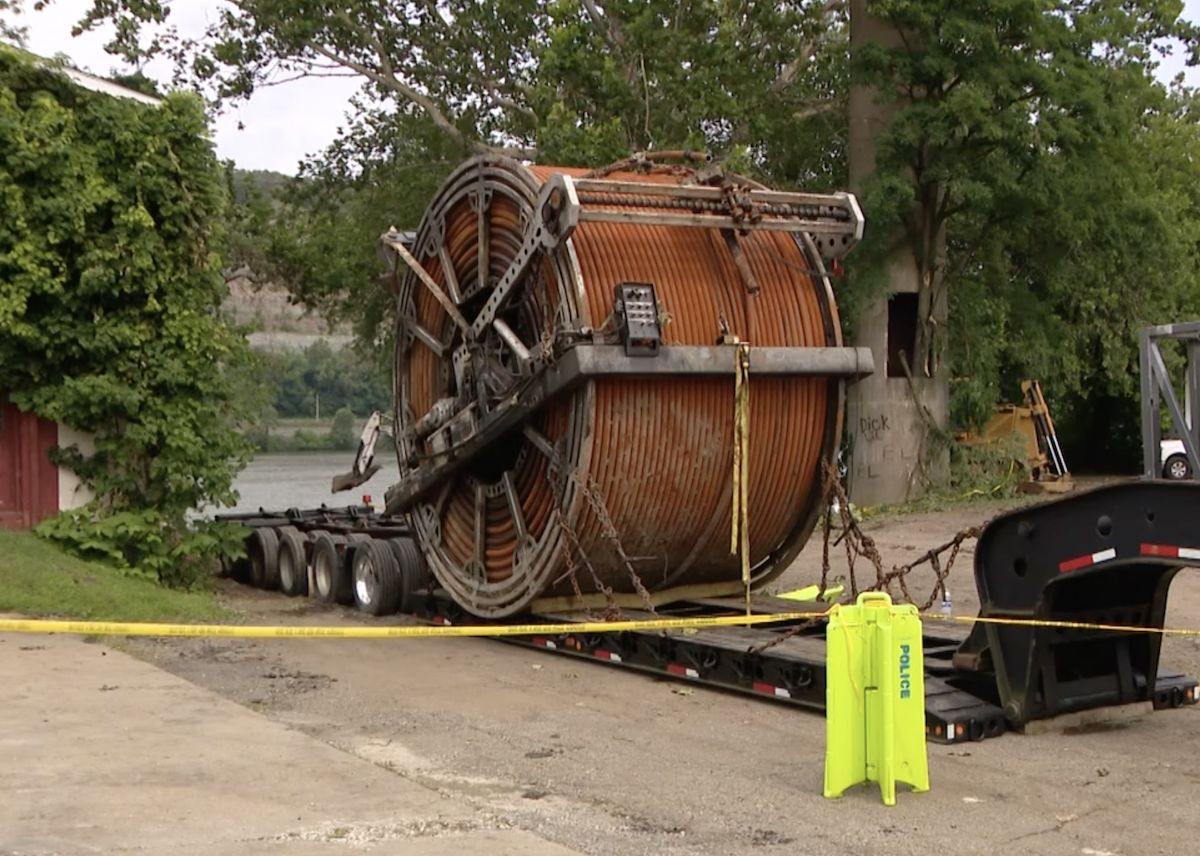When travel writer John Gullion took his family to Buc-ee’s the weekend after its grand opening in east Tennessee, they found themselves circling the parking lot.
This new Buc-ee’s, which opened in June about 20 minutes east of Knoxville, is the Texan retailer’s largest travel center yet. But traffic was still backing up onto Interstate 40, and parking spaces were full.
“We couldn’t find an empty one,” Gullion said. “Honestly the competition was getting a little ‘road rage’ in a couple of places we saw.”
It was, by all accounts, a Texas-sized inauguration to beaver fever.
Only a few years ago, it seemed unfathomable that yellow and red Buc-ee’s beaver signs would tower over highways in Tennessee, Alabama or Florida. After all, North Texas didn’t even get a Buc-ee’s until the Fort Worth store opened in 2016, followed by one in Denton. For many years, the privately owned company had kept its footprint largely south of Houston, where it was based.

The Buc-ee’s location in Terrell, Texas. (Elías Valverde II via Tribune Content Agency)
But now the retailer appears to be on a building spree. There are Buc-ee’s stores coming to northern Colorado, the Gulf Coast of Mississippi, upstate South Carolina, central Ohio and even snowy Wisconsin. Of the 46 stores now in operation, Alabama has four. Florida, Georgia and Tennessee each have two. Kentucky and South Carolina each have one, with second locations in the pipeline.
Buc-ee’s, it seems, intends to become a national force in the highway convenience store industry.
Experts in business and branding strategy say the company has what it takes to succeed far beyond the borders of Texas. Buc-ee’s has captured what every retailer ultimately covets: A visit to a store is about the experience, not just a transaction, says Jeff Lenard, vice president of strategic industry initiatives for the National Association of Convenience Stores.
“You walk in and your senses are hit with sound and smell,” Lenard said.
With traditional convenience stores, the mindset is to get one’s purchases and leave as quickly as possible. The Buc-ee’s experience is more of a treasure hunt that includes bathrooms touted as the “world’s cleanest,” fresh barbecue, roasting pecans, vast walls of jerky and candy, unique merchandise and a picture with the beaver mascot, Lenard said.

The Fort Worth Buc-ee’s along I-35W opened in May 2016 and was the first in North Texas. Gordon Turner, at the breakfast burrito counter, was among the first shoppers. (Paul Moseley/Star-Telegram via Tribune Content Agency)
“Thirty minutes and however many dollars later, you’re out there smiling, and the experience is not something every retailer can replicate,” Lenard said.
That’s exactly what Gullion witnessed at the new Tennessee store. Among the throngs of eager shoppers, employees were passing out fudge while other workers at the barbecue station called out, “Fresh brisket!”
“There was a lady who was standing there watching, and every time they did it, she did it too,” said Gullion, who writes for TheSmokies.com. “It was like being at a Grateful Dead concert or something, and she was singing along, ‘Fresh brisket!’ Which is really taking your fandom to the next level.”
Buc-ee’s big plans
The first Buc-ee’s was a far cry from the sprawling 70,000-square-foot stores of today.
Arch “Beaver” Aplin III opened his 3,000-square-foot convenience store in 1982 on the border of Clute and Lake Jackson, about 90 minutes south of Houston.
At first, Aplin grew the brand exclusively in Texas, eventually opening about 30 locations and employing thousands of workers. Travelers through Texas got to know and love the brand, which spawned a market of third-party resellers who ship Buc-ee’s merchandise since the company didn’t.
Buc-ee’s opened its first travel center outside of Texas in 2019 in Alabama. Since then, the company has grown to employ more than 8,000 people.

Dozens of people lined up before dawn for the May 2016 opening of Buc-ee’s in Fort Worth, including Tiffany Bonilla, who took a group selfie with a bronze beaver statue. (Paul Moseley/Star-Telegram via Tribune Content Agency)
Buc-ee’s leadership rarely discusses business plans publicly. The company didn’t respond to several requests for interviews for this story. News of future store locations usually leak only when the company goes to local government boards to seek building permits.
For a March 2019 profile in Texas Monthly, a reporter visited Alpin’s office in Lake Jackson. It was just after the first Buc-ee’s opened outside of Texas, and hanging on a wall was a road map of the United States with “dozens of thumbtacks” that the writer described as looking like Gen. William T. Sherman’s march through the South. Each was a possible future location that Alpin thought could succeed based on geography between cities connected by interstates.
Since that story in 2019, Buc-ee’s has clearly begun its march. And the company appears to be seeing the same successes as it had in Texas.
Lenard, the executive with the National Association of Convenience Stores, said he thinks Buc-ee’s can sustain its growth as the brand grows nationally.

The Beaver Nuggets are perhaps Buc-ee’s best-known snack food. (Star-Telegram via Tribune Content Agency)
“Right now, the core customer for Buc-ee’s is not someone who is in the neighborhood and needs a few items,” Lenard said. “It’s for travelers and locals who want an experience — at an affordable price point.”
Gary Orosy, an adjunct professor of marketing at the SMU Cox School of Business, said Buc-ee’s customers often experience a “halo effect” — a type of cognitive bias where a consumer favors a company because of past positive experiences.
“The halo effect is the fact that it feels like part of your family,” Orosy said. “There’s an emotional connection beyond the functional component. That’s true of Buc-ee’s. You always feel safe, invited, friendly and wanted. You don’t get that at other convenience stores.”
When customers experience the store in person, they can browse Texan-themed home goods and actually bring a little piece of the brand home, Orosy said.
Orosy also said Buc-ee’s billboard advertising strategy helps customers set expectations on the road, and the brand holds strong pride in the quality of its products and service.
And perhaps part of the secret to Buc-ee’s success is the chain’s expansion strategy. The company builds along major highways in high-traffic areas where the real estate is not at a premium, experts say. Its locations are open 24 hours a day, 365 days a year.
“Take that combination of service quality, product quality and convenience, and they would outrank any of their convenience store competitors,” Orosy said. “Because it’s easy to get off and on the highway from a Buc-ee’s.”
Thirty minutes and however many dollars later, you’re out there smiling, and the experience is not something every retailer can replicate.
Jeff Lenard, vice president of strategic industry initiatives for the National Association of Convenience Stores
Image
Customers also say wearing Buc-ee’s merchandise in public feels like being part of a club. When a person wears Buc-ee’s swag, somebody is always going to comment on their apparel, start talking to them and share their love of the brand.
“People want to be ambassadors to the brand,” Orosy said. “They want to wear a Buc-ee’s T-shirt or hat to say, ‘I’m a fan of Buc-ee’s!’ When you get to that point — when you have people speaking for and endorsing your brand — it’s like you have little micro-influencers of your brand. They execute that package consistently wherever you are.”
In the past, people have been willing to drive hours to experience a Buc-ee’s. But as the chain expands and becomes more common elsewhere in the U.S., it remains to be seen whether the novelty experience may wear off.
Marketing expert Orosy said he anticipates the brand will continue to expand without over saturation.
“The key is choosing the right locations: high traffic volume, easy off and on access and sizing the store to the expected customer count,” Orosy said. “Some Buc-ee’s are larger than others, for example.”

Taylor
Crystal Taylor, who helps organizations strategically manage change and lives in San Antonio, said Buc-ee’s handled consumer travel needs with a white-glove approach. That means focusing on clean restrooms, innovative food and product offerings, and the likeable beaver character.
“Buc-ee’s made a bold tradeoff when they decided they were going to target customers and not so much the commercial trucking business,” Taylor said. “That’s tough, and you know they took heat over that. But that’s what it took to create their vision, which seems to have been that white-glove customer experience.”
The “somewhat silly” beaver character also may be what helps cultivate a cult-like following, Taylor said.
“It’s got that bit of whimsy to it, and when you’re headed on a trip, hopefully you’re looking for whimsy,” Taylor said. “I think people enjoy being part of a group, and when you see a bumper sticker referencing the beaver, it just makes you want to be part of something whimsical and recognizably funny.”
For Gullion, the Tennessee travel writer, the “whimsical” beaver is why his family has stopped at Buc-ee’s during trips over the years.
“We knew (Buc-ee’s) would be a place where we can take a break from the monotony of the road trip and just kind of embrace the absurdity of a giant beaver and celebrating bathrooms and just get out of the car and participate in something.”
Sevierville, TN is NOW OPEN
170 Buc-ee’s Blvd
Kodak, TN 37764 pic.twitter.com/Rd3pWfXwhX— Buc-ee’s Beaver (@bucees) June 26, 2023
When the Sevierville Buc-ee’s came to Gullion’s hometown, he wondered whether his attitude about the retailer would change. But after two months, Gullion said the novelty hasn’t worn off.
“Locally, I’m not going to drive 30 minutes out of my way past several perfectly acceptable gas stations for my weekly fill-up, but if I’m going that way? Sure,” Gullion said. “Ultimately, I think the Buc-ee’s novelty exists and that adds to the fun, but it’s more than a novelty, right? There’s a solid business model for a market that has, at least in my experience, been terribly underserved.”







